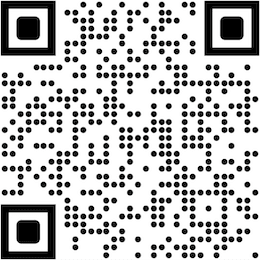Raklavar e Brezhoneg
Laouen omp o kinnig da Vretoned ar 21añ kantved an droidigezh-mañ eus ar Bibl e brezhoneg a-vremañ. N'eo ket, e gwirionez, un droidigezh nevez, met un adweladenn eus un droidigezh kozh graet e diwezh an naontekvet kantved.
Gwilh ar C'hoad a servijas Doue e vuhez-pad, o prezeg hep ehan keloù mat ar Silvidigezh e Jezuz-Krist. Evel ma kare Ger Doue ha ma oa ur brezhoneger ampart, e troas da gentañ an Testamant Nevez e brezhoneg (embannet e 1883 ha 1893), ha goude-se ar Bibl en e bezh (embannet e 1897), atav en e yezh, brezhoneg Treger.
An adweladenn-mañ, kaset da benn hag embannet e 2004, gwellaet e 2011, ha diazezet war an troidigezhioù embannet e 1893 ha 1897 a sell ouzh pemp tachenn:
- Nevesaat an troioù lavar un tammig re gozh.
- Lakaat e brezhoneg unvan ar gerioù pe an troioù-lavar n'int ket implijet er-maez eus Bro-Dreger.
- Brezhonekaat un nebeud gerioù re c'hallek.
- Evit ar gerioù pouezus, bep gwech ma'z eo posupl, klask mirout an hevelep ger brezhonek, pa'z eo implijet an hevelep ger e yezh an destenn orin.
- Lakaat an destenn er skrivadur peurunvan a-vremañ.
Evit henn ober, ur sikour prizius hon eus kavet e div droidigezh all an Testamant Nevez: hini Yann-Frañsez Ar Gonideg (embannet e 1827), hag hini Alfred-Llewelyn Jenkins (adembannadur 1935).
Troidigezh Gwilh ar C'hoad a zo un droidigezh gant kenglotadur strizh, evel ma lavarer (da lavarout eo kentoc'h ger-ha-ger); un droidigezh rik eo eta, n'eo ket atav fichet brav ar stumm-skrivañ, met ar frazennoù a zo eeun.
Diazezet eo an droidigezh-se war an Destenn Resevet (Textus Receptus).
Avant-propos en Français
Nous sommes heureux de mettre à la disposition du public de Bretagne du 21ème siècle cette traduction en langue bretonne moderne de la Bible. En vérité, il ne s'agit pas d'une traduction nouvelle, mais de la révision d'une ancienne traduction, celle de Monsieur Le Coat.
Guillaume Le Coat a servi Dieu durant toute sa vie, prêchant sans discontinuer la bonne nouvelle du Salut en Jésus-Christ. Comme il aimait la Parole de Dieu et qu'il maîtrisait très bien la langue bretonne, il a traduit en breton le Nouveau Testament dans un premier temps (publié en 1883 et 1893), puis la Bible entière (publiée en 1897), toujours dans une langue à connotation trégoroise.
Cette révision publiée en 2004, améliorée en 2011, et basée sur les traductions publiées en 1893 et 1897, porte sur cinq points:
- Moderniser les expressions un peu anciennes.
- Transposer en breton unifié les mots ou les tournures qui ne sont pas utilisées en dehors du Trégor.
- Remplacer quelques mots qui sont directement issus du français par un vocabulaire plus conforme au lexique breton.
- Concernant les mots importants, essayer, quand cela est possible, de conserver le même mot en breton lorsque le le même mot est utilisé dans la langue du texte d'origine.
- Transposer le texte dans la graphie unifiée actuelle.
Pour mener à bien cette tâche, nous avons trouvé une aide précieuse dans les traductions du Nouveau Testament de Jean-François Le Gonidec (éditée en 1827) et d'Alfred-Llewelyn Jenkins (réédition de 1935).
La traduction de Guillaume Le Coat se range dans la catégorie des traductions dites à correspondance formelle (c'est à dire plutôt du mot à mot); c'est donc une traduction rigoureuse, dans laquelle l'effet de style n'est pas recherché, les phrases sont simples.
C'est une traduction basée sur le Texte Reçu (Textus Receptus).
Foreword in English
We are pleased to make this modern Breton translation of the Bible available to the public in 21st century Brittany. Really it is not a new translation, but a revision of an old translation, that of Monsieur Le Coat.
Guillaume Le Coat served God throughout his life, continuously preaching the good news of Salvation in Jesus Christ. As he loved the Word of God and mastered the Breton language very well, he translated the New Testament into Breton first (published in 1883 and 1893), then the entire Bible (published in 1897), in Tregorrois Breton.
This revision published in 2004, improved in 2011, and based on the translations published in 1893 and 1897, focuses on five points:
- Modernise archaic expressions.
- Transcribe into unified Breton words or phrases that are not used outside of Trégor.
- Replace a few words that come directly from French with a vocabulary more in line with the Breton lexicon.
- Regarding important words, try, when possible, to keep the same word in Breton when the same word is used in the language of the original text.
- Transcribe the text in the current unified spelling.
In carrying out this task, we found invaluable help in the translations of the New Testament by Jean-François Le Gonidec (1827 edition) and Alfred-Llewelyn Jenkins (1935 re-issue).
Guillaume Le Coat's translation falls into the category of so-called formal correspondence translations (i.e. rather word for word); it is therefore a rigorous translation, in which the effect of style is not sought, the sentences are simple.
This is a translation based on the Text Receptus (Textus Receptus)



